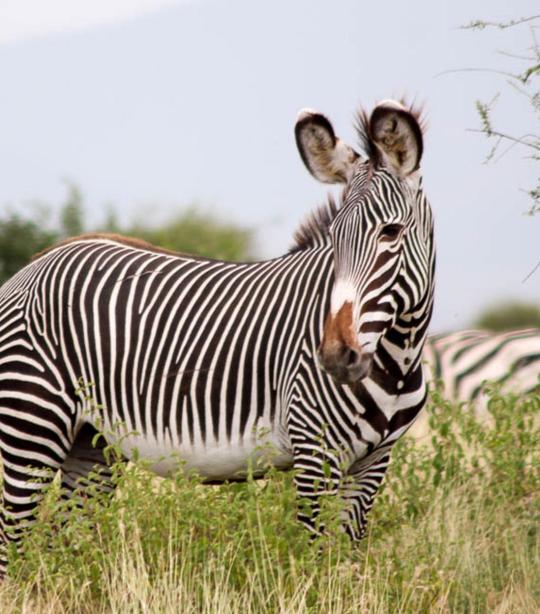Se-tenant: Mountain Zebra (Equus zebra), Blue Wildebeest (Connochaetes (South-West Africa 1931)
Mountain Zebra (Equus zebra), Blue Wildebeest (Connochaetes (South-West Africa 1931)
05 March (South-West Africa ) within release Issues of S.W.A. goes into circulation Se-tenant Mountain Zebra (Equus zebra), Blue Wildebeest (Connochaetes face value 2*2'6 South African shilling
| Se-tenant Mountain Zebra (Equus zebra), Blue Wildebeest (Connochaetes in catalogues | |
|---|---|
| Michel: | Mi:NA-SW PR156-157 |
| Stamp Number: | Sn:NA-SW 117 |
Se-tenant is square format.
Also in the issue Issues of S.W.A.:
- Stamp - Kori Bustard (Ardeotis kori) face value ½;
- Stamp - Kori Bustard (Ardeotis kori) face value ½;
- Stamp - Cape Cross face value 1;
- Stamp - Cape Cross face value 1;
- Stamp - Bogenfeis face value 2;
- Stamp - Bogenfeis face value 2;
- Stamp - Windhoek face value 3;
- Stamp - Windhoek face value 3;
- Stamp - Waterberg face value 4;
- Stamp - Waterberg face value 4;
- Stamp - Luderitz Bay face value 6;
- Stamp - Luderitz Bay face value 6;
- Stamp - Country's motives face value 1;
- Stamp - Common Eland (Taurotragus oryx) face value 1'3;
- Stamp - Common Eland (Taurotragus oryx) face value 1'3;
- Stamp - Mountain Zebra (Equus zebra), Blue Wildebeest (Connochaetes face value 2'6;
- Stamp - Mountain Zebra (Equus zebra), Blue Wildebeest (Connochaetes face value 2'6;
- Se-tenant - Waterberg face value 2*4;
- Se-tenant - Bush Scene face value 2*1;
- Se-tenant - Common Eland (Taurotragus oryx) face value 2*1'3;
- Se-tenant - Mountain Zebra (Equus zebra), Blue Wildebeest (Connochaetes face value 2*2'6;
- Se-tenant - Herero House face value 2*5;
Se-tenant Mountain Zebra (Equus zebra), Blue Wildebeest (Connochaetes it reflects the thematic directions:
Mammals are any vertebrates within the class Mammalia (/məˈmeɪli.ə/ from Latin mamma "breast"), a clade of endothermic amniotes distinguished from reptiles (including birds) by the possession of a neocortex (a region of the brain), hair, three middle ear bones and mammary glands. All female mammals nurse their young with milk, secreted from the mammary glands. Mammals include the largest animals on the planet, the great whales. The basic body type is a terrestrial quadruped, but some mammals are adapted for life at sea, in the air, in trees, underground or on two legs. The largest group of mammals, the placentals, have a placenta, which enables the feeding of the fetus during gestation. Mammals range in size from the 30–40 mm (1.2–1.6 in) bumblebee bat to the 30-meter (98 ft) blue whale. With the exception of the five species of monotreme (egg-laying mammals), all modern mammals give birth to live young. Most mammals, including the six most species-rich orders, belong to the placental group. The largest orders are the rodents, bats and Soricomorpha (shrews and allies). The next three biggest orders, depending on the biological classification scheme used, are the Primates (apes and monkeys), the Cetartiodactyla (whales and even-toed ungulates), and the Carnivora (cats, dogs, seals, and allies).
Zebras (US: /ˈziːbrəz/, UK: /ˈzɛbrəz, ˈziː-/) (subgenus Hippotigris) are African equines with distinctive black-and-white striped coats. There are three living species: Grévy's zebra (Equus grevyi), the plains zebra (E. quagga), and the mountain zebra (E. zebra). Zebras share the genus Equus with horses and asses, the three groups being the only living members of the family Equidae. Zebra stripes come in different patterns, unique to each individual. Several theories have been proposed for the function of these patterns, with most evidence supporting them as a deterrent for biting flies. Zebras inhabit eastern and southern Africa and can be found in a variety of habitats such as savannahs, grasslands, woodlands, shrublands, and mountainous areas


